#andor theme
Explore tagged Tumblr posts
Note
What are your thoughts on Andor S2 and THAT ending?
I LOVED IT!! STOP TAKING IT IN BAD FAITH AND THINKING OF IT AS A TROPE, IT’S A CONTINUATION OF THE SHOW’S THEMES/DISCUSSIONS!!!! THAT BABY REPRESENTS THE FUTURE!! IT REPRESENTS THE FACT THAT WHILE CASSIAN’S FIGHTING FOR A SUNRISE HE’LL NEVER SEE, FUTURE GENERATIONS WILL GET TO SEE THAT SUNRISE!!!!!! SAME AS KLEYA GETS TO SEE THE SUNRISE!!! ITS ABT THE THEMES!!!!!!!!! ITS NOT A DUMB TRAGIC TROPE!!!!!!!!!!!

#I CRIED!!!!!!!!! A LOT!!!#andor#andor spoilers#AND IT REPRESENTS WHAT HES HAD TO GIVE UP. HE WONT SPEND TIME W FAMILY BUT HE DOES THIS SO OTHERS/HIS LOVED ONES CAN#also on bix criticism SHE HAD TO GET WRITTEN OUT THE SHOW SOMEHOW. SHES NOT IN ROGUE ONE#LIKE IT WAS DISAPPEARING OR DYING AND AT LEAST THIS WAY IMPLIES A HAPPY ENDING *AND* ACTUALLY IS THEMATICALLY RELEVANT TO THE SHOWS THEMES#idk i get how it can be annoying but andor isnt that kinda show it doesnt do tropes it does insightful brilliant stuff#that u can analyse every second of#the jyn n cassian tag was a HELLHOLE after the finale. COPARENTING BITCH!! COPARENTING!!! USE UR NOODLE!!!#thanks for the ask!
612 notes
·
View notes
Text

its too late senator! ive depicted myself as chad-sian Andor and you are Mon Moth-mald! welcome to the rebellion.
#Andor#andor season 2#cassian andor#mon mothma#andor is peak star wars because of on top of cutting-edge performances#relevant political themes#and top-notch writing#we get frames like these#fan art
772 notes
·
View notes
Text
Aside from the Ghorman Massacre and the leadup to it (whew) the part of Andor S2 that most hits for me personally is Mon's extraction from the senate. Partly because it's a pretty solid tense-espionage-plot sequence and that's my jam.
But primarily because, on a spiritual level, that's a Rogue One Hallway Scene to me. Literally none of it works without a double handful of small, brave acts of resistance lining up exactly right. Mon never even takes the senate floor if Bail and that other senator aren't working the procedural rules. Nobody outside the chamber even SEES the speech if a couple of unnamed maintenance technicians aren't acing the malicious compliance game. It's possible Luthen never even sends Cassian on the mission if Lonni doesn't warn him there's a mole in the other extraction team. Cassian never gets close to Mon if her aide (on a technicality because she FIRED him like two hours ago) doesn't lead him through the building and loan Cassian his credentials. It's possible nobody gets out of the building alive if that same aide doesn't (1) put himself in the line of fire to distract the ISB agent and then (2) pick up her blaster and volunteer - in his formal civilian robes and slightly shaking voice - to stay behind and hold that gun on the guards and delay the moment they call in Mon's escape.
Something something collective resistance, something something revolution as a relay race, something something Remember that the frontier of the Rebellion is everywhere and even the smallest act of insurrection pushes our lines forward...Remember this: try.
#it's a great show in a vacuum but i often feel it fails as a *prequel*#in that it's simply not interested or engaged with a lot of the most compelling characterization and themes in rogue one#however this was one of the rare moments they understood the prequel assignment and as with everything in this show when it hits it HITS.#anyway those unnamed techs and also erskin semaj are extremely important to me#andor#andor spoilers#rogue one#my posts
462 notes
·
View notes
Text

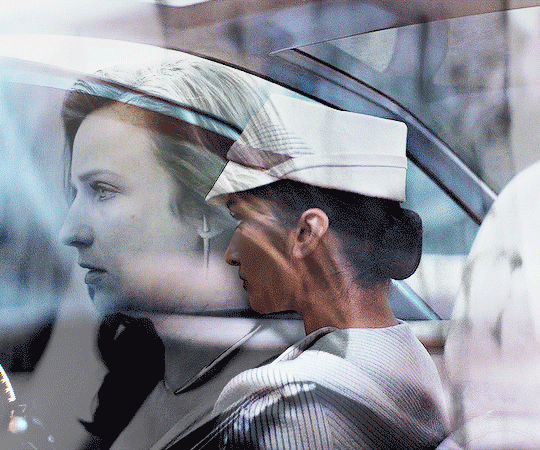
Vel and Cinta in Andor 2x03 | Harvest
#andoredit#starwarsedit#swedit#dailyvelcinta#swshows#andor#andor spoilers#vel sartha#cinta kaz#velcinta#*mine#the fact that cinta looked back means so much to me personally#so on-theme for them too#anyway i don't like blending. but i decided to do it anyway#and i think it turned out nicely
459 notes
·
View notes
Text



hot gfs doing hot gf shit (stealing from the empire)(again)
#i just have to gif every second of them together okay#except for. well you know#andor#velcinta#vel sartha#cinta kaz#flashing gif#my gifs#there's just something about how they're always together in a place where you can see their breaths#forever the cold theme for me with them#oh that gives me an idea......#okay no more tag rambling i have to write something down
340 notes
·
View notes
Text
I finished Andor Season 2 last night.
It's wild how the final shot of the last episode just made one of the major themes in my favorite Star Wars movie obsolete.
I can’t remember the last time I’ve felt this betrayed.
After nine years, we’re now told that the "real" tragedy of Rogue One is that Cassian is a father but will never get to meet his child. That Cassian's sacrifice now has "real" meaning because he has someone who will remember him and keep his "legacy" alive.
And it's so fucked up.
Rogue One was always tragic because these rebels had no one—no one to remember them, no one to keep their legacies alive—except for each other. And yet they still chose to sacrifice themselves for a greater cause.
The real tragedy of Rogue One is that these rebels sacrificed themselves knowing they wouldn't get to live in the world they fought for.
The real tragedy is these rebels not even knowing if their efforts will help others—will save the galaxy.
The real tragedy is Jyn and Cassian finding each other, choosing one another in the end, but not having enough time to be together.
By making Cassian a father in Andor, the original tragedy of Rogue One is meaningless.
And so is one of Rogue One's major themes: a theme that says that your life has meaning—your life has purpose—even when you sacrifice yourself. A theme that says you sacrifice yourself for a cause, not because you expect to be remembered, and not because you expect to reap the benefits, but because it's the right thing to do.
That's the point of the movie.
And at the end of Rogue One, in that final scene on Scarif's beach, Jyn and Cassian had chosen to be together. They had no one but each other. They knew that they would be forgotten, and that their sacrifices would never be written in history. And they had accepted that—and they had accepted each other.
Now, that scene is meaningless. Because Cassian has a child who will carry on his "legacy"—who will remember him.
For weeks, I’ve been looking forward to watching Rogue One upon completing Andor. But now...what’s the point?
The story's been broken by its very own creator.
#rogue one is the reason i'm a star wars fan#so now what's the point?#how did we go from incredible cinema in episodes 8 and 9 to this ending?#i thought this show was supposed to seamlessly lead into rogue one#instead it's made the plot themes and character arcs feel disjointed#i really can't remember ever feeling betrayed like this#andor season 2#andor spoilers#rebelcaptain#rogue one
292 notes
·
View notes
Text
i think it finally clicked what about cassian and luthen's relationship i find so compelling. when cassian officially joined the rebellion at the end of season one, he effectively surrendered all of his autonomy to luthen. "kill me or take me in." he literally put his life in luthen's hands. he clearly had very little will to live, and beyond giving luthen the choice to kill him, he gave luthen the choice to give him purpose again. and not Just purpose, either, but full control over the rest of his life, as well. he became part of the cause because he felt he had nothing else left, and was either going to effectively kill himself, or let someone else dictate every single thing he does until he dies anyway, now with a reason behind it, now able to plausibly deny it being wanted. it's simultaneously an admittance of defeat, where he is telling luthen that he won, and an act of defiance, where he is challenging luthen to discard him rather than use him. and obviously luthen would rather use him.
but then there is the bix aspect. cassian's hopelessness at the end of s1 implies that he did not, at that point, see bix as an adequate reason to keep going. not as a reason to stay alive, not as a reason to stay present in anyone else's life. it was not worth remaining an individual, for her sake or his own. and obviously a lot of that is from the insane depressive grief that the whole Ordeal of s1 + losing maarva was. but still. he was very closed off, and singlemindedly thinking about his own ability to give himself to the rebellion. which makes his protectiveness over her in s2 all the more compelling. he is repeatedly getting worked up over her well-being, and acting out in ways that are possibly jeopardizing to the rebellion. it's such a fascinating transition, and regardless of how they got there again, i think in season 2, cassian sees bix as his last place to be human. the one person in the galaxy he can be an individual with, rather than a tool. which is why, in my current, ever-evolving understanding of these characters, i think he gets so contradictory and confused about what he wants from her. he wants her to be strong and a soldier so they can go to war together, because the war is so terribly important to him, but he also wants her to prioritize her own safety over anything else and never put herself at risk, because if he loses her he loses himself. this is necessarily the conflict between them.
which comes to the incredible exchange between cassian and luthen about bix in episode 6 of s2, where we can see how much this conflcit is affecting cassian. he can't stand that luthen is potentially putting bix in danger, and can't stand that luthen is treating them like droids, rather than people. but then. then luthen Reminds cassian. he reminds cassian that he already surrendered his autonomy. he already surrendered his individuality. "we're not who we were when we started." cassian chose this; chose to change for this, chose to give up being a person for this. he doesn't get to now choose to put bix, his one haven, over it. she needs to be able to handle herself, because cassian asserting himself by worrying about her compromises their entire system. "you will have to decide when it becomes too large a problem." but cassian's response is the most important part: "no. that's gonna be up to you." he's essentially turning it back on luthen. if luthen expects him to remain compliant in the way his role calls for, then luthen needs to be fullfilling his side of it, and making sure cassian has an environment that he Can remain compliant in, without compromising anything. "you want my blood? you help me solve this." he is finally standing his ground on something to luthen, asserting himself in a way that is basically begging luthen to let him submit again. he wants to be part of the cause; he still wants to be able to lose himself in it, but he also needs bix, and will not give up the life he knows is possible to share with her.
#i have a Lot more i want to say about bix specifically and exclusively but i didn't know how to fit it in here#will probably make a longpost dedicated to her once i've parsed through enough of her complexities#and i want the next arc. i need to know how she is after The Ending of episode 6. bc like. no way she's just good now#but anyways#sorry for talking too much this if my first starwars longpost#i'll get more concise as i figure things out better#sooo much i am thinking about. one of the Major themes of this show in my opinion#is the nonautonomy of being a part of a system#vs the restoring humanity of connection with other people#it's present in bixcass / cass + luthen's relationships#and with dedra and syril#and luthen and kleya and mon and lonnie etc etc etc#much more to say about that. eventually#luthen rael#cassian andor#bix caleen#andor#andor season 2#andor spoilers#star wars andor#andor meta
184 notes
·
View notes
Text
andor has not one not two but THREE mean lesbians and that’s what makes it peak television
#also the incredible writing and complex characters and beautiful cinematography and nuanced exploration of its themes#but also the lesbians#andor#andor spoilers#vel sartha#cinta kaz#kleya marki
258 notes
·
View notes
Text
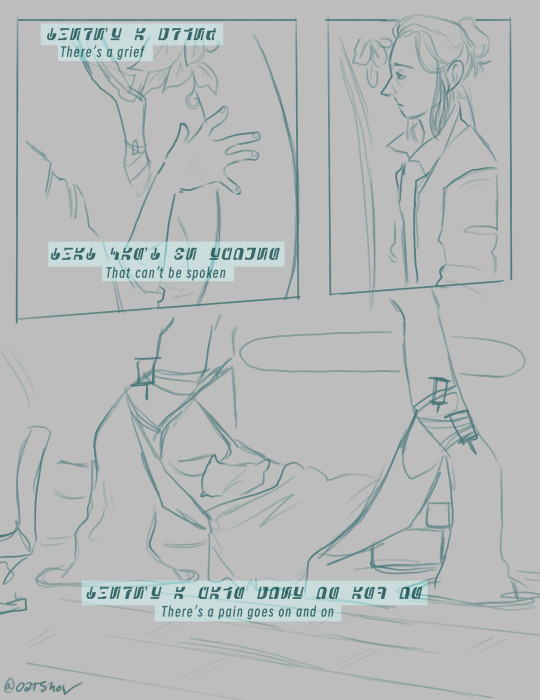
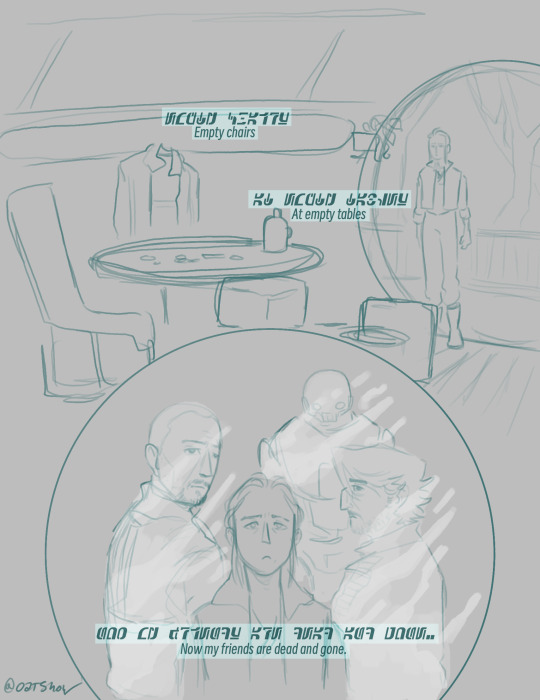
who wants to get sad :) (while you're here check out my Comms)
#andor#rogue one#Vel Sartha#Cassian Andor#K2so#ruescott melshi#star wars#oats.png#myart#if it helps (it doesnt) the version i was listening to when i thought of this was the one to the tune of the muppets theme song#andor spoilers#kinda?
113 notes
·
View notes
Text
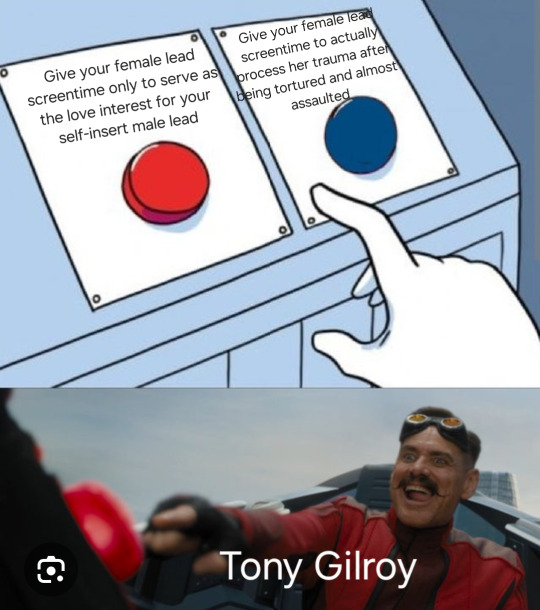
I had to change the first image because I dont even think he knew giving her a proper arc was an option.
#andor critical#andor season 2#bix caleen#Anti Tony Gilroy#Tony Gilroy critical#Silly me expecting a meaningful story arc#Because#Let's be real#Showing how she unalives her agressor is not the samenas dealing with the trauma.#If you're going to include such a delicate theme#At least write it with the weight it deserves#Not just for shock value (morbo)#You could have given her an actual story line#Tenian la oportundiad y obvio no la tomaron
55 notes
·
View notes
Text
Sorry for being the way I am lmao, but I cannot believe andor s2 has me jealous of sad cereal man. How did this happen. This is exactly how I want a woman to treat me. How dare he have what I want

#I think I bluescreened when she grabbed his face like that. like asserting her dominance#and then like. the everything in the next episode#why does sad cereal man get to have my ideal relationship!!! this is unfair!!!#lovingly controlling women call me pls!!!!!!!#(I am so sorry to all the amazingly written big themes in this show lmao I'm sorry but my brain is just so smooth and mean women are so hot#andor#dedra meero#syril karn#andor spoilers#text#shut up nerd
58 notes
·
View notes
Text
apropos of nothing isn't it tragic how it took like fifteen years for the resistance to really get it together. You know? Like, it's already a tragedy that Palpatine got all those emergency powers and made himself emperor and all that jazz, but isn't it also terribly sad that it went on for over a decade before the rebel alliance got organized enough to defeat him. Maybe there's a lesson in there somewhere! I mean it's never too late to start but it's never too early either! Letting the empire normalize itself at all probably set resistance back a lot! It's great that they destroyed the Death Star but it's a tragedy that it was ever deployed at all and it took 19 years of empire to build. Remember Alderaan? :| Alderaan got blown up. Procrastination kills
#just to be clear i'm not holding this against any of the characters involved in the resistance or anything#just that according to Andor it was all pretty small scale and low-key for a long time#which fits the general theme of wide-spread complacency letting Palpatine get away with genocide#+ declaring himself emperor in the first place#with just pockets of people resisting here and there
40 notes
·
View notes
Text
Thinking about the song "Ship in Port" by Radical Face and clones
Thinking about the line "Farewell to the chains we were born into" and what that can mean for the clones


Thinking about how "But I have always stayed in place/Under that old illusion that it's safe" could equally describe Hunter, Echo, and (s1+2) Crosshair's complete opposite approaches to the Empire and post-war life.
The way Crosshair clings to his identity as a soldier of the Empire
And Echo as a soldier of the Republic
But Hunter puts his identity as a soldier behind him
Crosshair fights for the Empire to gain purpose
Echo fights against the Empire to save his brothers
And Hunter decides the Empire is too strong to even try to oppose
"A ship in port is a safer one"

"but it's not the reason it was made"

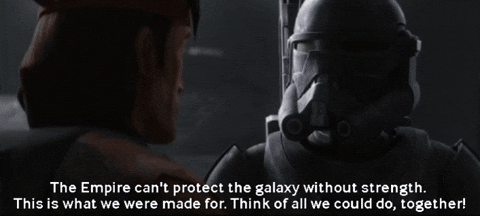
"So forgive me if I wander off"

"And forgive me more if I just stay"

Thinking about what The Bad Batch could have been if it had more fully explored the differences between those ideologies
(Thinking about what The Bad Batch could have been if it had dedicated more screen time to the 'reg' clones within the Empire and the underground network's fight to free them , instead of just sidelining Echo and Rex for a hypothetical clone rebellion show we might never get)
#i have lots of thoughts and many draft posts in which i've been struggling to figure out how to word those thoughts#tbb had SO much potential#it was so close!#it really could have been on par with Andor if it has just tried#i feel like i'm projecting these themes that aren't really there#the pieces are there the show just didn't focus on them#i considered saying hunter 'hides from the empire to protect his family' but that never included crosshair just omega#so that felt like giving him too much credit#ignore the music video i just really love the acoustic version bc MMM that viol!#the rest of the lyrics totally fit for clones of this era too btw#like SO WELL ugh#if i had the time resources and attention span I'd make a music video#maybe someday...#(lol i have waay too many projects stuck in my brain and also the new semester started and i'm already so behind rip)#while we're on the subject of radical face and clones#“always gold” is THE perfect heartbreaking Kix song!#tbb#tbb analysis#sw tcw#tbb echo#tbb hunter#tbb crosshair#arc trooper echo#the clones#radical face#bardic musings#sorry i didn't credit the gifs#this has been in my drafts since long before i knew people care about that and i can't find where i found them from#just know the shitty ones are the ones i made lol
89 notes
·
View notes
Text
So far, I really, really really, love this new season of Andor. I can't help saying "it's so pretty" at every shot, every planet feels so alive and lived-in, i'm really invested in all the stories right now, the writing is just as good as the first season was which was not a given considering how high the bar had been set.
Like, listen, Andor is on my list of favorite tv shows of all time, and i'm so appreciative by how much like home it felt stepping back in it. There's something rare nowadays about tv shows you can just trust to get you where it's needed and Andor remains one of them.
#andor#i already have a lot to say about the themes being very different but still feeling like a continuation#but i'll wait for the show to be over to do that#andor spoilers#andor season 2
33 notes
·
View notes
Text
to elaborate on my last post abt leftist/non leftist takes in andor. the entire show has complex political storytelling None of it can be discussed solely through story archetypes of "good" and "evil." for example syril's character. he did not have a "redemption arc." you are not supposed to "forgive him." he is killed (by one of the people he oppressed!) because his actions are unforgivable and that is the narrative justice he deserves. the audience being encouraged to sympathize with him does not equate to him displaying "the good within evil."
the point of his character arc is that humanity does not survive under fascism. he is an antagonist, yes, but he is just as much a victim of the *real* enemy of the narrative (fascism!) as every other character in the show is. everyone suffers under fascism, even those who serve it. his individuality is stripped from him; he is conditioned to obey, to further the goals of his superiors, to place career ambitions over everything, all without questioning why. which leads him to participating in things he does not agree with. when he learns what's really happening on ghorman, his worldview is shattered. he was raised to believe the empire is infallible, and discouraged from developing his own opinions. but he does. he does, because he's human, and the people he meets there are human, and when he is faced with it, he cannot fathom the violence he has helped inflict upon them. that is his own tragedy, and a tragedy shared among the little people who serve at the behest of an imperial machine. when they realize how much damage they have done it's too late. it's not redemption, it's recognition. in an ultimate form, it would be acceptance. (think the imperial lieutenant double agent from the aldhani arc in s1. "you'll hang for this" "7 years serving you? i deserve worse than that") there is no good and evil dichotomy to be found here, no matter how nuanced you try and make it. andor is a show about victims, not heroes. you can't place the actions of characters in vacuums without reconizing that they are REactions, and everything they do is just as important as what is being done to them
#mostly seen this on youtube where people lack political backbones but#yeah. he's a fun one and i don't like people watering this down#he's not a good guy! he's not supposed to be a good guy! but that doesn't matter!#it's not about being good it's about learning to recognize the oppressive regime built around you#whatever. idk how people can watch this show and refuse to engage with its political themes#man that's the whole show#andor#andor season 2#andor spoilers#andor star wars#syril karn#andor meta#andor analysis
121 notes
·
View notes
Text
I can’t believe Star Wars made their own La Marseilles
#ghorman#star wars#andor season 2#star wars andor#I do kind of wish it had been like that scene in Casablanca where they were sing battling vs the empire singing their own theme#I wonder what the empire’s anthem would be#maybe the imperial march but with words?
48 notes
·
View notes